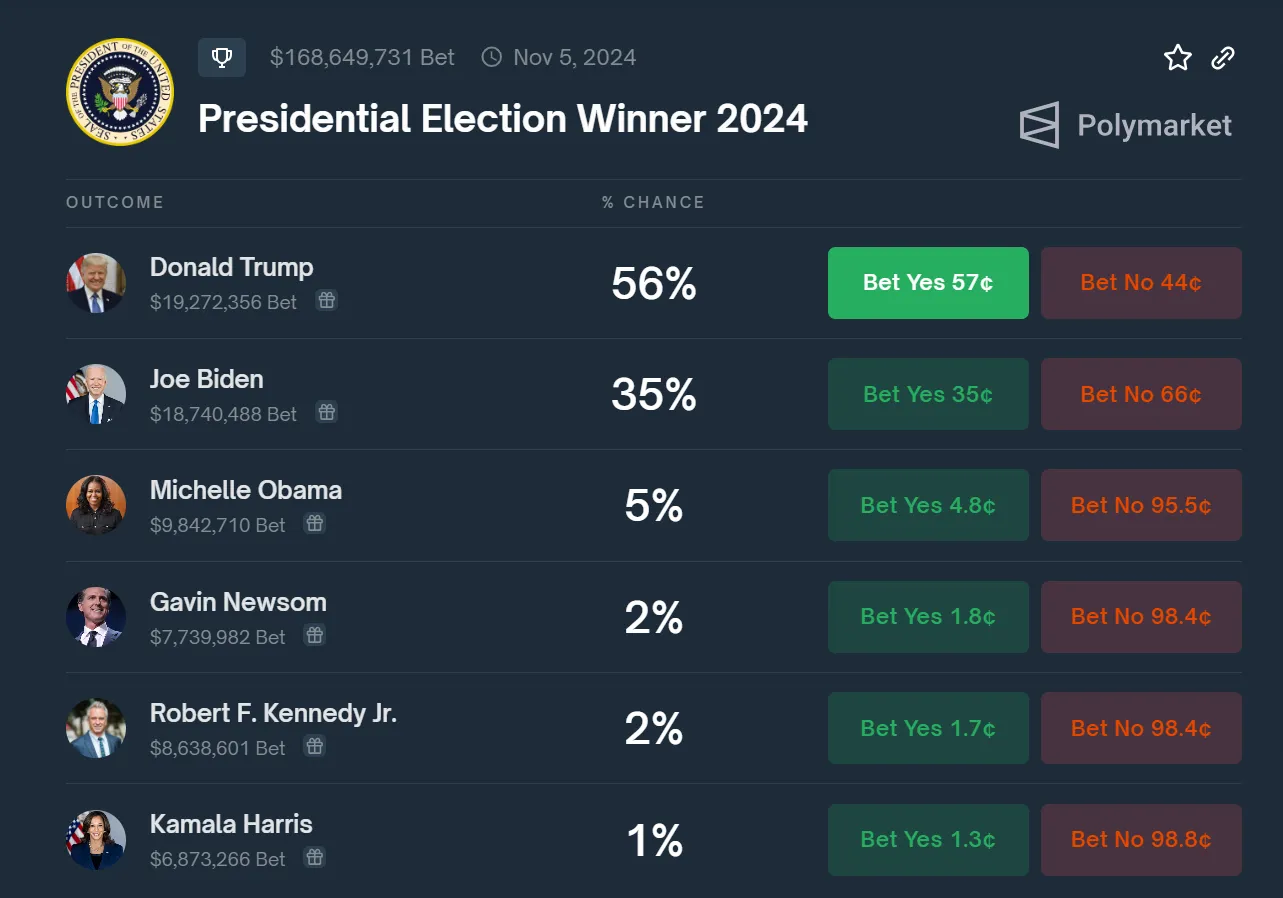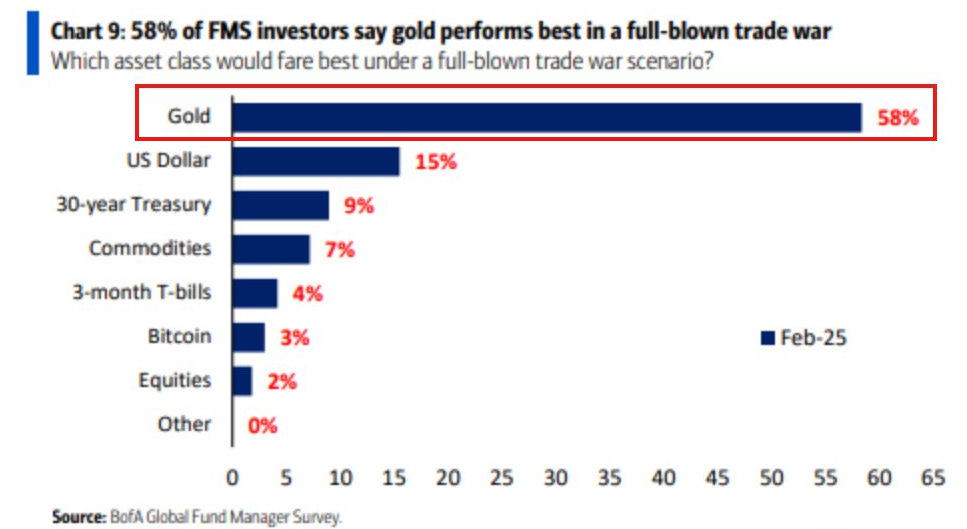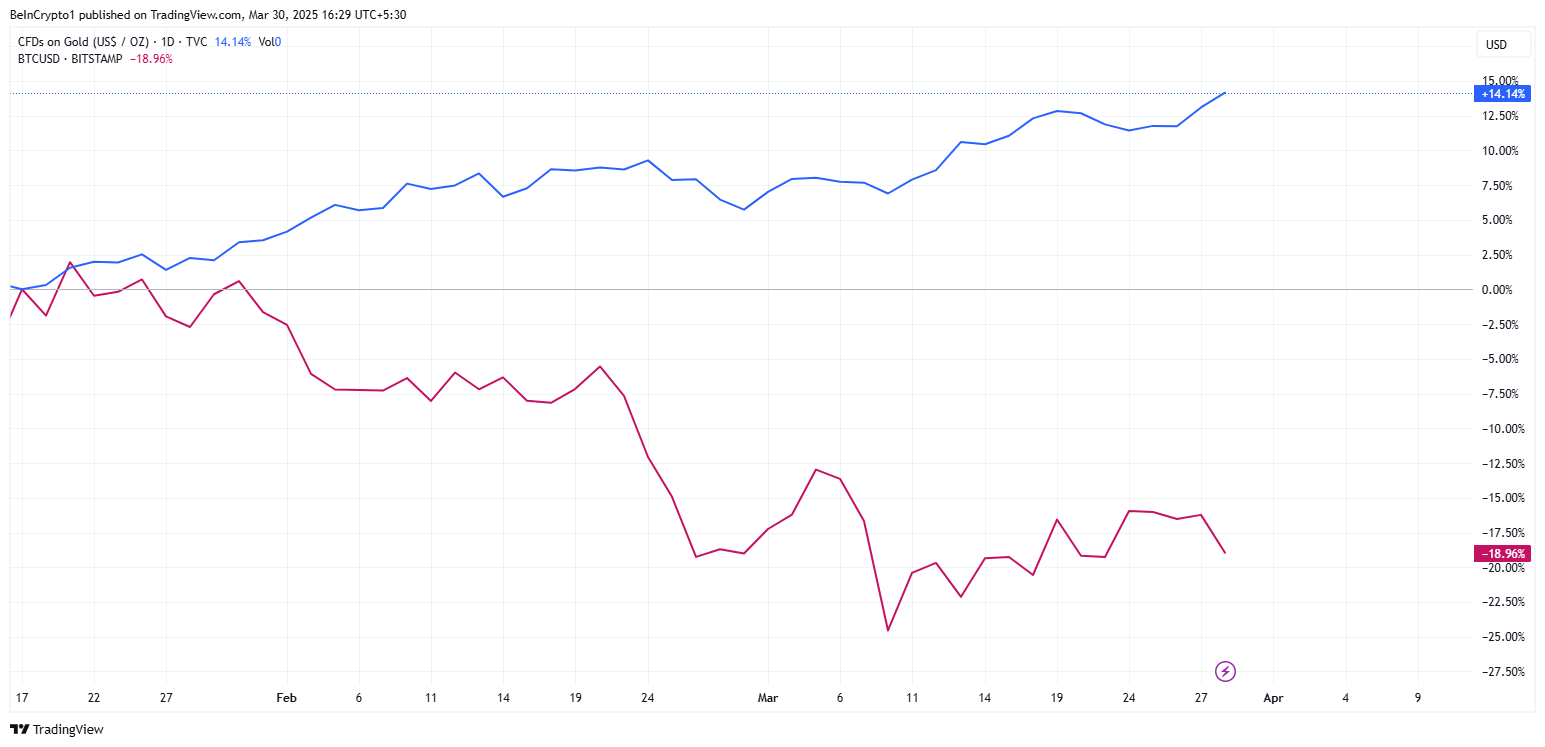Bitcoin
Experts Debate Trump’s Vision to Mine All Bitcoin in the US

Former President Donald Trump’s recent statement about wanting all Bitcoin to be made in the US has sparked a debate within the crypto community.
While some Bitcoin enthusiasts initially welcomed the idea, many experts argue that Trump’s stance misunderstands Bitcoin’s fundamental principles.
Trump’s Bitcoin Vision Sparks Debate
Crypto journalist Laura Shin raised a critical question. She asked why Bitcoiners celebrated Trump’s statement about making all Bitcoins in the US.
She emphasized that this could create jurisdictional risk, making Bitcoin less decentralized and more vulnerable to attacks. Margot Paez, a Bitcoin advocate and sustainability consultant, echoed this sentiment.
“We do not want hashrate centralization in the US. This should be obvious. Please get it together,” she said.
Read more: How Much Electricity Does Bitcoin Mining Use?
Congressman Sean Casten also expressed his disagreement with Trump’s statement. In a series of tweets, Casten highlighted Bitcoin’s practical limitations. He emphasizes the energy-intensive nature of Bitcoin mining and its limited utility in modern banking.
However, Nic Carter, a partner at Castle Island Ventures, disagreed with Casten’s “correction” to Trump’s view. While Carter acknowledged that Bitcoin does not need to be mined in the US, he believed that Casten’s criticisms of Trump’s statement were exaggerated and warranted a response.
Several prominent figures in the crypto industry shared their perspectives on Trump’s statement. Alex Thorn, Head of Research at Galaxy Digital, argued that Trump’s statement could be seen as a geopolitical signal. This could potentially encourage other nations to consider Bitcoin mining seriously.
“There’s a view that competition will accelerate, ultimately accelerating and entrenching global adoption. If your geopolitical adversaries (or allies, for that matter) think it’s important, you must also play the game or risk falling behind,” he said.
Matthew Pines, National Security Fellow at the Bitcoin Policy Institute, further emphasized the potential geopolitical implications of Trump’s stance. Pines suggested that depending on the scale and execution of Trump’s Bitcoin-related policies, the global reaction could range from indifference to significant geopolitical shifts.
“I’m not sure how a Bitcoin-For-America/America-For-Bitcoin policy stance will interact with the potential political and geopolitically induced instability in the US [Treasury] market, but it could get very interesting and very messy, very quickly,” he wrote.
Amid this heated debate, prominent crypto investor Mike Alfred expressed a mix of support and skepticism. He initially supported Trump’s statement but later acknowledged the broader implications.
“Yes, we know. But it’s the spirit of it that matters more than the esoteric details,” Alfred added.
Pro-Crypto Moves: Election Strategy or Genuine Shift?
Trump’s announcement followed a series of increasingly pro-crypto statements, including pledges to defend the right of self-custody and accept crypto campaign donations. Despite these endorsements, Trump has historically had an inconsistent stance on Bitcoin. For instance, in July 2019, Trump publicly declared that he is “not a fan of Bitcoin and other cryptocurrencies,” which he thinks “are not money, and whose value is highly volatile and based on thin air.”
Moreover, Trump’s low standing among global leaders further complicates the potential impact of his pro-Bitcoin stance. It remains unclear whether Trump’s statements will lead to tangible policy changes or merely serve as political rhetoric aimed at his base.
However, it is important to note that Trump’s support for the crypto industry arrives strategically as President Joe Biden’s administration adopts a stricter approach, including to the Bitcoin mining industry. A significant instance is the shutdown of the Chinese crypto mining firm MineOne Partners. BeInCrypto reported that Biden’s administration mandated MineOne to vacate and sell its property near a Wyoming Air Force base, which hosts intercontinental ballistic missiles, labeling the company a national security threat.
Read more: Crypto Regulation: What Are the Benefits and Drawbacks?

Data on crypto-based prediction markets Polymarket shows that Trump has a 56% chance of winning the November presidential election. Meanwhile, Biden only has a 35% chance.
Disclaimer
In adherence to the Trust Project guidelines, BeInCrypto is committed to unbiased, transparent reporting. This news article aims to provide accurate, timely information. However, readers are advised to verify facts independently and consult with a professional before making any decisions based on this content. Please note that our Terms and Conditions, Privacy Policy, and Disclaimers have been updated.
Bitcoin
Marathon Digital to Sell $2 Billion in Stock to Buy Bitcoin


Marathon Digital Holdings, one of the largest Bitcoin mining companies in the US, made headlines with its announcement of a $2 billion stock offering to increase its Bitcoin holdings.
This strategic move, detailed in recent SEC filings, shows Marathon’s aggressive approach to capitalize on the growing crypto market.
Marathon’s $2 Billion Stock Offering: Key Details
On March 30, 2025, Marathon Digital Holdings announced a $2 billion at-the-market (ATM) stock offering to fund its strategy of acquiring more Bitcoin. The company filed a Form 8-K with the SEC, outlining its plan to raise capital through the sale of shares, with the proceeds primarily aimed at increasing its Bitcoin holdings.
According to the SEC filing (Form 424B5), Marathon intends to use the funds for “general corporate purposes,” which include purchasing additional Bitcoin and supporting operational needs.
Marathon holds 46,376 BTC, making it the second-largest publicly traded company in Bitcoin ownership, behind MicroStrategy. The company’s Bitcoin holdings have grown significantly in recent years, from 13,726 BTC in early 2024 to the current figure.
“We believe we are the second largest holder of bitcoin among publicly traded companies. From time to time, we enter into forward or option contracts and/or lend bitcoin to increase yield on our Bitcoin holdings.” Marathon confirmed
This $2 billion stock offering continues Marathon’s strategy to bolster its balance sheet with Bitcoin, a move that aligns with its long-term vision of leveraging cryptocurrency as a store of value.
Marathon’s strategy mirrors that of MicroStrategy. MicroStrategy’s stock price has soared with Bitcoin’s value, providing a blueprint for companies like Marathon to follow. By increasing its Bitcoin holdings, Marathon aims to position itself as a leader in the crypto mining sector while diversifying its revenue streams beyond traditional mining operations.
Marathon Digital CEO Fred Thiel advises investing small amounts in Bitcoin monthly, citing its consistent long-term growth potential.
The issuance of new shares to raise $2 billion could dilute the ownership of existing shareholders, potentially impacting the company’s stock price (MARA). As of March 31, 2025, MARA stock has experienced volatility, trading at around $12.47 per share, down from a 52-week high of $24, according to data from Yahoo Finance.
Moreover, Marathon’s heavy reliance on Bitcoin exposes it to the cryptocurrency’s price fluctuations. If Bitcoin’s price were to decline significantly, the value of Marathon’s holdings would decrease, potentially straining its financial position.
Disclaimer
In adherence to the Trust Project guidelines, BeInCrypto is committed to unbiased, transparent reporting. This news article aims to provide accurate, timely information. However, readers are advised to verify facts independently and consult with a professional before making any decisions based on this content. Please note that our Terms and Conditions, Privacy Policy, and Disclaimers have been updated.
Bitcoin
US Macroeconomic Indicators This Week: NFP, JOLTS, & More

Crypto markets have much to look forward to this week, which marks the end of the first quarter (Q1). As Q2 commences on Tuesday, several US economic data will drive Bitcoin (BTC) and crypto sentiment this week.
Traders and investors will watch a slate of US economic data releases that could ripple through Bitcoin and altcoin prices.
5 US Economic Data To Watch This Week
These US macroeconomic indicators could drive volatility amid fresh insights into the health of the world’s largest economy.

“Buckle up—volatility’s knocking. Right on time for the monthly shake-up,” a user on X quipped.
JOLTS
The first is the Job Openings and Labor Turnover Survey, or JOLTS, due for release on Tuesday, April 1. This report tracks available job vacancies in the US, effectively offering a window into employer confidence and labor market demand.
A strong showing, with openings exceeding recent trends of around 7.7 million, would suggest a strong economy. While this would strengthen the US dollar, it would dampen Bitcoin’s appeal as a hedge against weakness.
Conversely, a sharp drop in openings might stoke expectations of Federal Reserve rate cuts to bolster the economy. This outcome would lift risk assets like Bitcoin and crypto as investors seek alternatives to low-yield bonds.
ADP Employment
Adding to the list of US macroeconomic indicators this week is the ADP Employment report on Wednesday, April 2. This report will provide a private-sector payroll snapshot, serving as a preview of Friday’s main event.
There is a median forecast of 120,000 for March, following the previous month’s 77,000 reading. If job growth tops the consensus forecast, it could reinforce confidence in traditional markets, possibly pressuring crypto prices as the dollar gains ground.
On the other hand, a weaker-than-expected figure, say below 77,000, might hint at a slowdown. This would boost Bitcoin’s allure as a safe haven amid uncertainty. While not as authoritative as the official numbers, surprises here often set the tone for crypto traders adjusting their positions.
Liberation Day
Meanwhile, the stakes are high this week, with the US economy enduring uncertainties like Trump-era policies, including tariffs and government streamlining efforts. BeInCrypto reported on the upcoming Liberation Day, which is expected to bring new tariff announcements targeting nations imposing trade barriers.
“The last two months have already hurt American businesses and consumers, but the April 2 deadline seriously could make all of that look like a tempest in a teapot. We don’t know exactly what they’re going to do, but from what they’re saying, it sounds functionally like new tariffs on all US imports,” said Joseph Politano, economic policy analyst at Apricitas Economics.
Analysts predict extreme market volatility, with potential stock and crypto crashes reaching 10-15% if Trump enforces broad tariffs.
“April 2nd is similar to election night. It is the biggest event of the year by an order of magnitude. 10x more important than any FOMC, which is a lot. And anything can happen, “Alex Krüger predicted.
Initial Jobless Claims
On Thursday, April 3, crypto markets will watch the Initial Jobless Claims report, which shows the number of US citizens filing for unemployment insurance. Released weekly, this is a near-real-time pulse on layoffs and labor market stability.
Fewer claims, under the previous week’s 224,000 reading, could suggest resilience, supporting the dollar but tempering crypto enthusiasm. However, potentially exceeding the median forecast of 226,000 might raise red flags about economic health.
Such an outcome would drive demand for decentralized assets to hedge against potential turmoil. Given its weekly cadence, this report tends to spark quick reactions in the crypto market, especially when amplified by broader narratives like government efficiency cuts or tariff impacts in 2025.
US Employment Report
The week’s crescendo arrives Friday, April 4, with the US Employment Report, widely known as Non-Farm Payrolls. This comprehensive labor market update—including jobs added, the unemployment rate, and wage growth—is a linchpin for markets worldwide.
A strong report, higher than the previous reading of 151,000 jobs and a steady 4.1% unemployment rate, could bolster faith in the economy. This could curb crypto gains if the dollar rallies.
However, strong wage growth exceeding 0.3% month-over-month (MoM) might rekindle inflation fears, indirectly supporting Bitcoin as a store of value.
Conversely, a disappointing tally—under the median forecast of 140,000 jobs with unemployment ticking beyond 4.1%—could ignite recession worries. This would send investors flocking to Bitcoin and crypto.
Significant deviations from consensus forecasts, often by 50,000 jobs or more, have historically triggered sharp Bitcoin moves of 1-2% or greater.
“BofA [Bank of America] Securities expects a pickup in job growth for March. Keep an eye on those numbers,” crypto researcher Orlando noted.
For crypto market participants, the game plan is clear: track consensus estimates on economic calendars, watch real-time reactions, and brace for swings. Nevertheless, this week’s data could dictate Bitcoin’s next move in Q2 2025, particularly in April.
Fed Chair Jerome Powell will also address the economic outlook at the SABEW Annual Conference on Friday at 11:25 a.m. EST.

BeInCrypto data shows BTC was trading for $82,192 as of this writing, down by over 1% in the last 24 hours.
Disclaimer
In adherence to the Trust Project guidelines, BeInCrypto is committed to unbiased, transparent reporting. This news article aims to provide accurate, timely information. However, readers are advised to verify facts independently and consult with a professional before making any decisions based on this content. Please note that our Terms and Conditions, Privacy Policy, and Disclaimers have been updated.
Bitcoin
Gold Keeps Outperforming Bitcoin Amid Trump’s Trade War Chaos

Bitcoin (BTC) has long been touted as “digital gold.” However, as the global economy reels from escalating trade war tensions under Trump’s second term, institutional investors are fleeing to the real thing.
A recent Bank of America (BofA) survey found that 58% of fund managers view gold as the best-performing haven in a trade war—leaving Bitcoin with only a 3% preference.
Bitcoin’s Haven Status Faces a Reality Check
Gold is proving its dominance as the crisis asset of choice while Bitcoin struggles to hold its ground. This comes amid rising geopolitical risks, the ballooning US deficit, and uncertainty driving capital flight.
“In a recent Bank of America survey, 58% of fund managers said gold performs best in a trade war. This compares to just 9% for 30-year Treasury Bonds and 3% for Bitcoin,” The Kobeissi Letter noted.

For years, Bitcoin advocates have championed it as a hedge against economic instability. Yet, in 2025’s volatile macro environment, Bitcoin struggles to earn institutional investors’ full trust.
The Bank of America survey reflects this status, with long-term US Treasury bonds and even the US dollar losing appeal as trade wars and fiscal dysfunction shake market confidence.
The US deficit crisis—now projected to exceed $1.8 trillion—has further eroded confidence in traditional safe havens like US Treasuries.
“This is what happens when the global reserve currency no longer behaves as the global reserve currency,” a trader quipped in a post.
However, instead of looking to Bitcoin as an alternative, institutions are overwhelmingly choosing gold, doubling physical gold purchases to record levels.

Barriers To Bitcoin Institutional Adoption
Despite its fixed supply and decentralization, Bitcoin’s short-term volatility remains a key barrier to institutional adoption as a true safe-haven asset.
While some traders still view Bitcoin as a long-term store of value, it lacks the immediate liquidity and risk-averse appeal that gold provides during crises.
Further, President Trump is expected to announce sweeping new tariffs on “Liberation Day.” Experts flag the event as a potential trigger for extreme market volatility.
“April 2nd is similar to election night. It is the biggest event of the year by an order of magnitude. 10x more important than any FOMC, which is a lot. And anything can happen, “Alex Krüger predicted.
Trade tensions have historically driven capital into safe-haven assets. With this announcement looming, investors preemptively position themselves again, favoring gold over Bitcoin.
“Gold’s no longer just a hedge against inflation; it’s being treated as the hedge against everything: geopolitical risk, de-globalization, fiscal dysfunction, and now, weaponized trade. When 58% of fund managers say gold is the top performer in a trade war, that’s not just sentiment that’s allocation flow. When even long bonds and the dollar take a back seat, it’s a signal: the old playbook is being rewritten. In a world of rising tariffs, FX tension, and twin deficits, gold might be the only politically neutral store of value left,” trader Billy AU observed.
Despite Bitcoin’s struggle to capture institutional safe-haven flows in 2025, its long-term narrative remains intact.
Specifically, the global reserve currency system is changing, US debt concerns are mounting, and monetary policies continue to shift. Despite all these, Bitcoin’s value proposition as a censorship-resistant, borderless asset is still relevant.
However, in the short term, its volatility and lack of widespread institutional adoption as a crisis hedge mean gold is taking the lead.
For Bitcoin believers, the key question is not whether Bitcoin will one day challenge gold but how long institutions will adopt it as a flight-to-safety asset.
Until then, gold remains the undisputed king in times of economic turmoil. Meanwhile, Bitcoin (BTC exchange-traded funds notwithstanding) fights to prove its place in the next financial paradigm shift.
“The ETF demand was real, but some of it was purely for arbitrage…There was a genuine demand for owning BTC, just not as much as we were led to believe,” analyst Kyle Chassé said recently.
Disclaimer
In adherence to the Trust Project guidelines, BeInCrypto is committed to unbiased, transparent reporting. This news article aims to provide accurate, timely information. However, readers are advised to verify facts independently and consult with a professional before making any decisions based on this content. Please note that our Terms and Conditions, Privacy Policy, and Disclaimers have been updated.
-

 Ethereum23 hours ago
Ethereum23 hours agoWhales Accumulate 470,000 Ethereum In One Week – Bullish Momentum Ahead?
-

 Regulation21 hours ago
Regulation21 hours agoJapan Set To Classify Cryptocurrencies As Financial Products, Here’s All
-

 Market20 hours ago
Market20 hours agoTop 3 Made in USA Coins to Watch This Week
-

 Altcoin24 hours ago
Altcoin24 hours agoAnalyst Reveals Why The XRP Price Can Hit ATH In The Next 90 To 120 Days
-

 Market23 hours ago
Market23 hours ago3 Token Unlocks for April: Parcl, deBridge, Scroll
-

 Market19 hours ago
Market19 hours agoSolana (SOL) Price Risks Dip Below $110 as Bears Gain Control



















